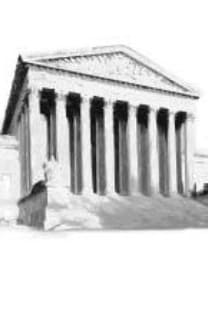Hıristiyanlıkta İncil Yorumlarının Tarihsel Kaynakları
Hermeneutik
felsefi bir kavram olmakla birlikte asıl itibariyle dinsel kökenlidir.
Felsefede yorum ve anlam sorununu ifade etmekle birlikte asıl kullanımı
Hıristiyanlık teolojisinde gerçekleşmiştir. Çünkü Hıristiyanlık hem yeni bir
din, hem de Yahudiliğin devamı olma iddiasında olduğu için, hem de kurucusu
olan Hz. İsa’ya ilahlık vasfı da verdiği için ister istemez ortaya çıkan
çelişkileri açıklama ve yorumlama ihtiyacı gerekmiştir. Bu nedenle yorum konusu
en fazla Hıristiyan teolojisinde kendisini göstermiştir. Hıristiyanlık,
kurucusunu ilah kabul ettiği için İncillerden daha önemli kabul eden, aynı
zamanda ortaya çıktıktan bir kaç yüzyıl sonra “kutsal kitap” kavramına sahip
olan ve bu “kutsal kitap” kavramını Augustinus’tan sonra kilisenin gerisinde
bırakan, Hz. İsa’nın kendisinin Yahudilere gönderildiğini söylemesine rağmen
putperestlere de yönelen bir din olduğu için tüm bu çelişkiler büyük bir yorum
geleneğinin doğmasını gerektirmiştir. Hıristiyanlık üzerine yapılacak tüm felsefi
veya teolojik çalışmalar, Hıristiyanlıktaki problemlerin tarihsel kaynaklarını
göz önüne almak zorundadır. Bu aynı zamanda isabetli yorumun bir şartıdır. Bu
çalışmada Hristiyanlığın tarihsel problemlerinin kökenlerine ve o problemleri
temsil eden tarihi şahsiyetlerin fikirlerine ve birbirleriyle olan ilişkilerine
yoğunlaşılmıştır.
Anahtar Kelimeler:
Ebionitler, Havariler, Paulus, Augustinus, Yorum
Historical Resources of Biblical Interpretation in Christianity
Hermeneutics is originally religious as well as being
a philosophical concept. Although it is related to the problem of
interpretation and meaning in philosophy, its usage has in fact developed in
Christian theology. Since Christianity was a new religion which attributed
divinity to its founder, Jesus, and claimed to be the successor of Judaism, it
was necessary to explain and interpret the contradictions that emerged. For
this reason, hermeneutics has mostly appeared in the Christian theology.
Christianity accepts its founder as a deity, he is seen as more important than
the Bible itself. A few centuries after the bible has emerged, it attained the
name ‘holy book’. This term has been discarded by the Church after Augustine.
In addition to these, Jesus was claimed to be sent to the Jews, yet Christianity
was also oriented toward pagans. All in all, the need to solve these problems
has created such a great tradition of interpretation. All philosophical or
theological studies on Christianity have to take historical sources of the
religion’s problems into account. This is also a necessity for an accurate
interpretation. This study focuses on the origins of the historical problems of
Christianity, the ideas of the historical figures who represent those problems
and their relations with each other.
Keywords:
Ebionites, Apostles, Paulus, Augustinus, Interpretation,
___
- BOER, Harry R. (1976). A Short History of the Early Church, Michigan: Wm. B. Eerdmans Publishing.
- BESANÇON, Alain (2000). The Forbidden Image, trans. by Jane Marie Todd, Chicago and London: University of Chicago Pres.
- CHADWICK, Henry (2003). The Church in Ancient Society, Oxford University Press.
- DAVIS, Leo Donald (1990). The First Seven Ecumenical Councils (325-787): Their History and Theology, Minnesota: Liturgical Press.
- HARRINGTON, Daniel J. (1991). The Gospel of Matthew, Minnesota: Liturgical Press.
- HARMAN, Ö. Faruk (1996). “Katolik Kilisesi ve Teokrasi”, Din-Devlet İlişkileri Sempozyum Kitabı, İstanbul.
- İNCİL-İ ŞERİF İLE TEFSİRİ (1865). (Osmanlıca), İstanbul: Artin Matbaası.
- İNCİL (1999). United Bible Societies, İstanbul: Ohan Matbaası.
- LOOFS, Friedrich (1914). Nestorius and His Place in the History of Christian Doctrine, Cambridge: Adamant MediaCorporation.
- LUTHER, Martin (1987). Commentary on Galatians, Cambridge: Kregel Publications.
- MONTAGUE, George T. (1997). Understanding The Bible: A Basic Introduction to Biblical Interpretation, Paulist Press.
- MICHEL, Thomas (1992). Hıristiyan Tanrı Bilimine Giriş, İstanbul: Ohan Basımevi.
- RAISANEN, Heikki (2001). Challenges to Biblical İnterpretation, Brill Academic Publishers.
- RAMSAY, William Mitchell (2001). St. Paulus: The Traveler and Roman Citizen, Kregel Publications.
- ROWAN, Williams (2002). Arius: Heresy and Tradition, Wm. B. Eerdmans Publishing.
- SARIKÇIOĞLU, Ekrem (2002). Başlangıçtan Günümüze Dinler Tarihi, Isparta: Fakülte Kitabevi.
- VERMES, Geza (2005). Ölü Deniz Parşömenleri: Kurman Yazıtları, çev. Nurfen Çelebioğlu, İstanbul: Nokta Kitap.
- WADDINGTON, George (1833). A History of The Church From The Earliest Ages to The Reformation, London: Baldwin & Cradock Publ.
- YAZICIOĞLU, Hulusi (1993). Bir Din Politikası Laiklik, İstanbul, Marmara Üniversitesi İlahiyat Fakültesi Yayınları.
- Yayın Aralığı: Yılda 2 Sayı
- Yayıncı: Bursa Uludağ Üniversitesi
Sayıdaki Diğer Makaleler
Toplumsallık, Anlam ve Bir Sosyal İnşa Olarak İnsan
Thomas Kuhn’da Dil Problemi: Aristotelesçi Fizik ve Hermeneutik
Derrida’nın Eczanesi: Reçeteyi Okuyamamak
Bellekte Dilsel Bağlam Bağımlılığı Sorunlarına Düşünce Dili Hipotezi Bir Çözüm Sunabilir Mi?
Aristoteles Düşüncesinde Politik Biyoloji ve Prohairesis
Hıristiyanlıkta İncil Yorumlarının Tarihsel Kaynakları
Aristoteles ve Descartes Bağlamında Akıl ve Zekâ Kavramlarının Farkları
Bir Töz Metafiziği Tartışması: Leibniz’in Spinoza Eleştirisi
Seneca’nın Erdem ve Bilgelik Anlayışının Ekolojik Etiğe Katkısı
